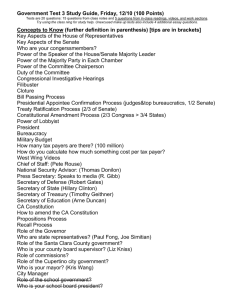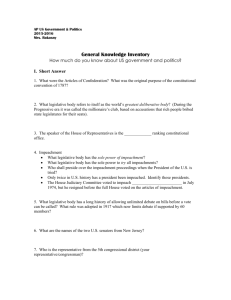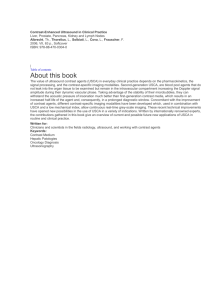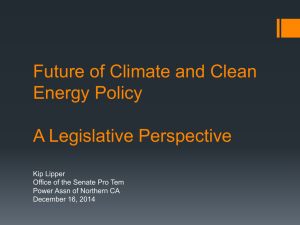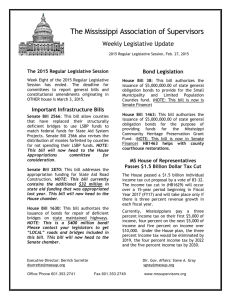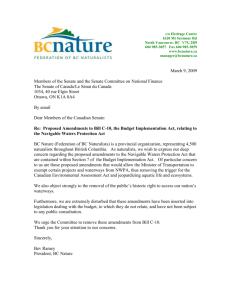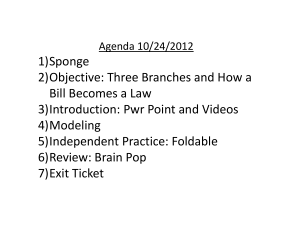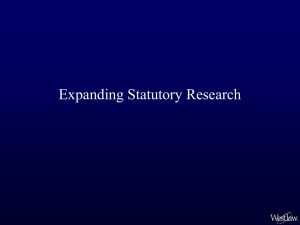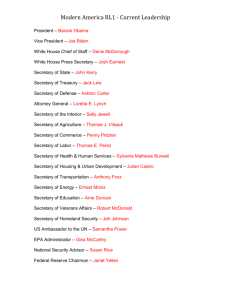Law Report Guide
advertisement
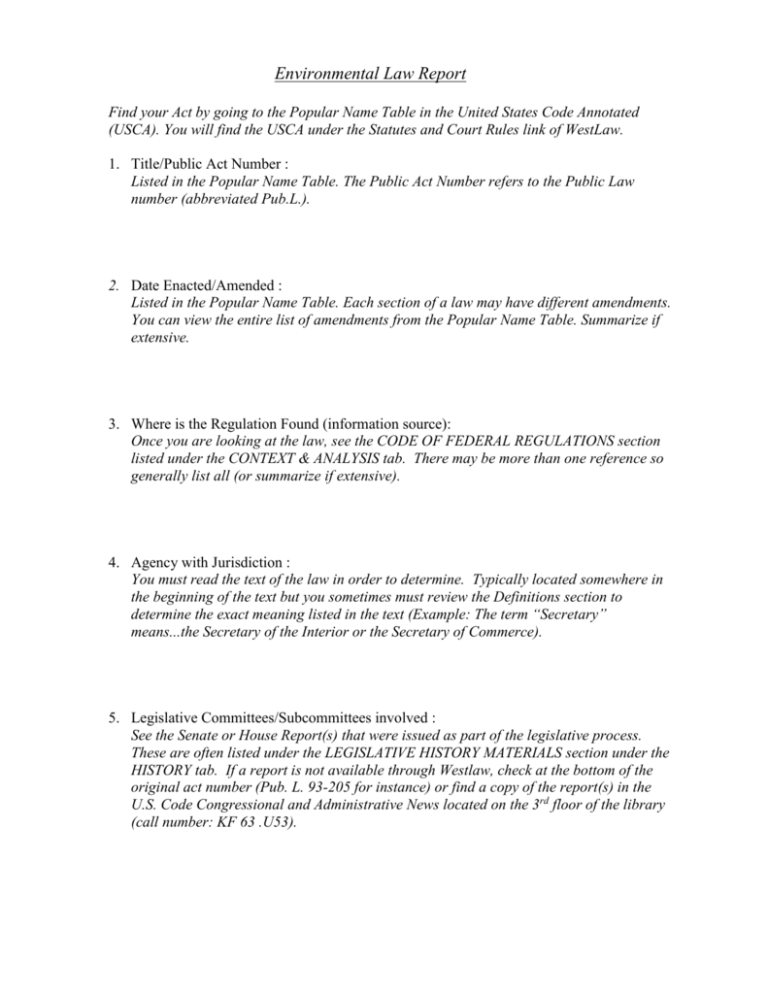
Environmental Law Report Find your Act by going to the Popular Name Table in the United States Code Annotated (USCA). You will find the USCA under the Statutes and Court Rules link of WestLaw. 1. Title/Public Act Number : Listed in the Popular Name Table. The Public Act Number refers to the Public Law number (abbreviated Pub.L.). 2. Date Enacted/Amended : Listed in the Popular Name Table. Each section of a law may have different amendments. You can view the entire list of amendments from the Popular Name Table. Summarize if extensive. 3. Where is the Regulation Found (information source): Once you are looking at the law, see the CODE OF FEDERAL REGULATIONS section listed under the CONTEXT & ANALYSIS tab. There may be more than one reference so generally list all (or summarize if extensive). 4. Agency with Jurisdiction : You must read the text of the law in order to determine. Typically located somewhere in the beginning of the text but you sometimes must review the Definitions section to determine the exact meaning listed in the text (Example: The term “Secretary” means...the Secretary of the Interior or the Secretary of Commerce). 5. Legislative Committees/Subcommittees involved : See the Senate or House Report(s) that were issued as part of the legislative process. These are often listed under the LEGISLATIVE HISTORY MATERIALS section under the HISTORY tab. If a report is not available through Westlaw, check at the bottom of the original act number (Pub. L. 93-205 for instance) or find a copy of the report(s) in the U.S. Code Congressional and Administrative News located on the 3rd floor of the library (call number: KF 63 .U53). 6. Purpose or Intent of the Law (why was it legislated) : This is sometimes listed at the beginning of the law but the Senate and House Reports (see above) provides the purpose, background, and need for the legislation. 7. Latest Developments to the Law : Look at the KeyCite link to see if there is any pending legislation, or if has been determined unconstitutional or preempted by the courts. Review material under the CONTEXT & ANALYSIS tab such as LAW REVIEW COMMENTARIES or American Law Reports (ALR LIBRARY) for recent writings regarding the law. Look through NOTES OF DECISIONS for recent court decisions regarding the law. Search the SECONDARY SOURCES (American Law Reports, Law Reviews & Journals), limiting to the last year or two. Search Cases (Supreme Court, Federal Cases) to find recent decisions regarding the law.
